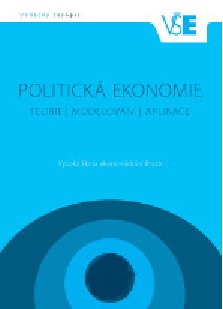Modelovanie nákladov nezamestnanosti mladých absolventov na slovensku: kontrafaktuálny prístup
Modelling the Costs of Unemployment for Young Graduates in Slovakia: A Counterfactual Approach
Author(s): Lucia Svabova, Marek Ďurica, Tomáš KlieštikSubject(s): Micro-Economics
Published by: Vysoká škola ekonomická v Praze
Keywords: unemployment; young jobseekers; propensity score matching; active labour market policy; graduate practice
Summary/Abstract: The article deals with the modelling of the costs of unemployment of young jobseekers in Slovakia. This modelling used real data on young unemployed who participated in the intervention Contribution to the Graduate Practice, which is one of the measures of active labour market policy in Slovakia. The main objective of this study is to quantify the costs that have to be paid from the state budget of Slovakia for the unemployment of these young graduates. The analysis was performed using the counterfactual method of Propensity Score Matching, which was followed by a measurement of employability and sustainability of jobs after completing the intervention and the associated costs of the unemployment of the scheme participants and individuals in the control group during the intervention impact period. The results of this modelling indicate that although young graduates in the intervention are not able to repay the aid to the state budget on average, their participation in the intervention spared the state budget on average from almost 20% to 70% of the money spent on each unemployed individual. These results are important for policy-makers to set optimal terms of the intervention and the amount of grants provided so as to have the greatest impact on lowering the costs of unemployment of young graduates.
Journal: Politická ekonomie
- Issue Year: 67/2019
- Issue No: 5
- Page Range: 552-566
- Page Count: 15
- Language: Slovak

